
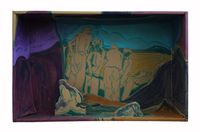
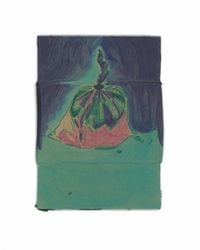
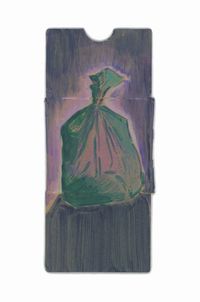
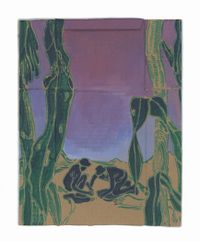
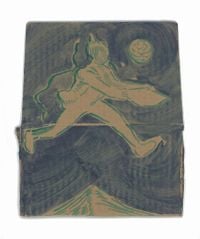
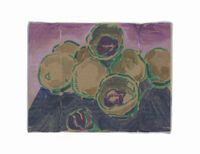
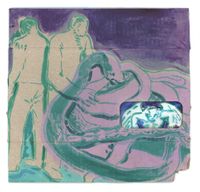
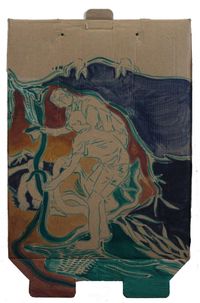
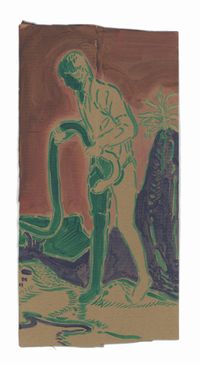
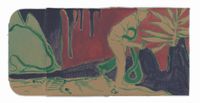
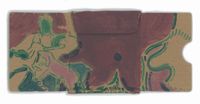
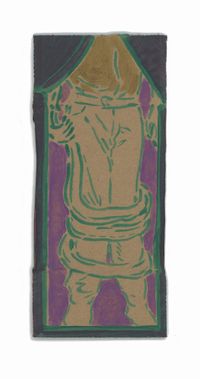
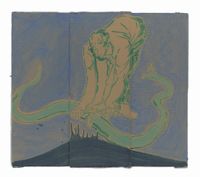
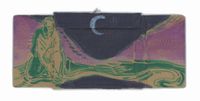
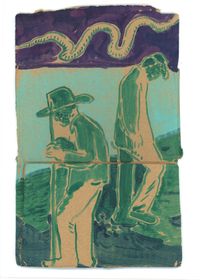
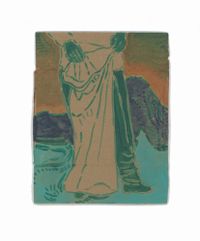
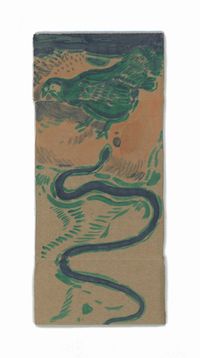
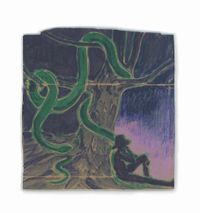
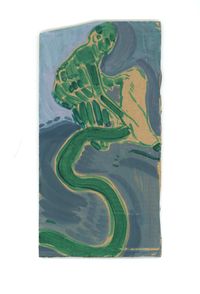
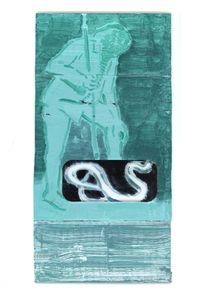
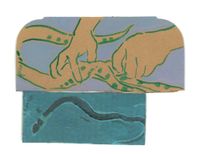
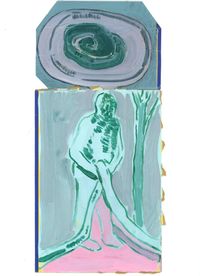
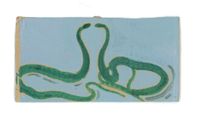
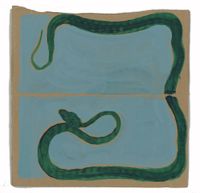

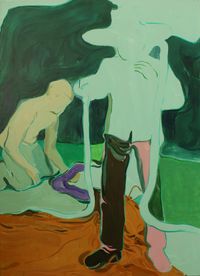
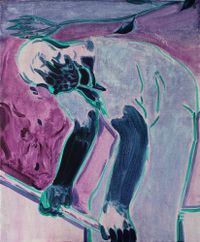
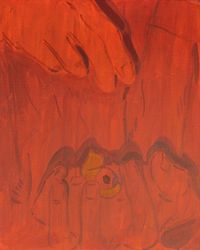
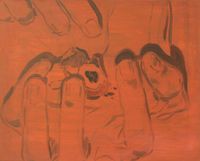
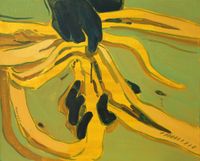
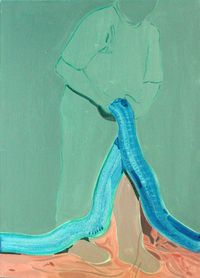
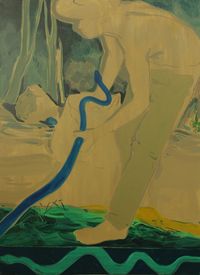
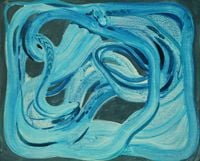
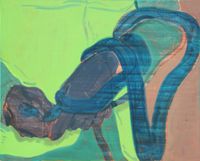
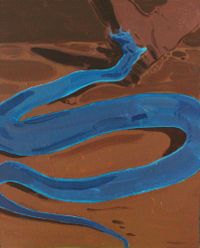
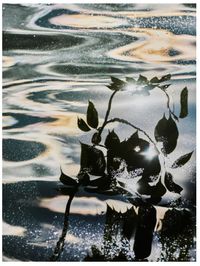
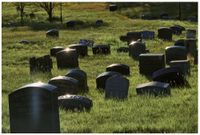
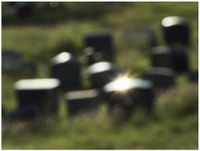
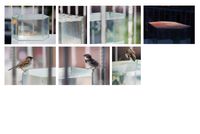
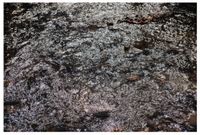
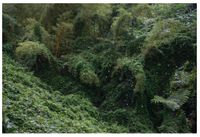
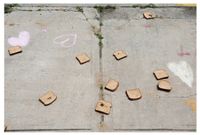
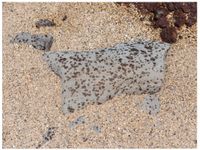
During the four months from last December to this March, we revisited the artists from the previous exhibition THere in an attempt to recollect the changes in their practice and life in Shanghai, especially during the two years of the pandemic. Some artists have located at new studios to continue their work; some artists have left Shanghai to pursue their careers around the world; some artists have started to participate in various exhibitions. With such a background, we shifted our focus from the artists' struggles for survival to their art practice itself. Therefore, we have expanded the range of artists we visited and invited four of them: Wong Kai Wai, Yijia Yang, Wei Zhang, and Min Zhao to present the group exhibition Half-Open Door.
The title for Half Open Door is derived from a poem by Swedish poet Tomas Gösta Tranströmer, The Half-Finished Heaven Poem, which includes the line 'Each man is a half-open door, leading to a room for everyone.' It was proposed by artist Wei Zhang. We find it very apt, as it perfectly symbolises the state of the four artists; each artist is a half-opened door inviting people to enter their world.
Wong Kai Wai is a photographer who grew up in Hong Kong and came to Shanghai alone after completing his study of photography in the United States. Having travelled to Hong Kong, the United States and finally to Shanghai, the millennial artist does not focus on the differing rhythms of the region and characteristics of the city in his works. Instead his works explore the trivial and mundane routines of everyday life. Waiting for something to happen naturally is emphasised in Wong's working methods.
In today's world, time is a valued commodity and waiting is undoubtedly extremely expensive and luxurious. It's only when you slow down and wait that you see the world in a very different way. In Wong's photographs, there is no complicated photographic techniques or intentional subjects. He needs a lot of time to wait for the slow metamorphosis of something. Little everyday items—a pot of flowers, a fish tank—would one day start to 'glow' in his eyes. For Wong, slowing down to absorb existence is not a simple strategy or value-based choice. It is a state of confrontation and becomes an extremely difficult thing to do.
Yijia Yang's art gives off a girl-next-door kind of familiarity. Her paintings often contain elements that seem particularly innocent and imaginative: trees with rabbit ears, translucent cats, and purple skies. These images are organised and placed in a non-realistic context; together with highly transparent colours. The images become fantastical while being real at the same time.
Painting dreams has been Yang's main art practice since her return from the UK. Dreams themselves are irrational, illogical brain activities. This is why, only by giving up the 'systematic knowledge'—the rational judgment and evaluation of interpreting paintings—you can feel and sense more from her artworks. On this basis, starting from the work Hi, There!, the practice of turning dreams into paintings is gradually replaced by the spatial potential of painting itself—'A painting that is created in order to create a space.' Even though the elements of cats, plants, etc in the picture remain the same, their duties and functions are expanded to broader realms.
Min Zhao loves hiking. She often hikes alone in nature for five or six days only with her backpack. She has covered almost all the southern coastline of England. The love of nature is human instinct. In Zhao's eyes, nature is first and foremost presented through texture. The rough, matte texture effects in her paintings correspond to her feelings within nature.
Min Zhao's undergraduate and graduate studies were both completed in England. Having studied in a different cultural context, her work is often considered by her peers to have an oriental touch. This also triggered an exploration of her own inner voice. From the confrontation at first, she began to seriously study and research Chinese painting and Eastern philosophy. A new style of fusion gradually emerges in her work. She steps into nature to experience the extreme weather while experimenting with various materials on the canvas to understand, and to integrate the expression of culture.
Wei Zhang's Memories about Catching Snakes describes a childhood experience. In the village of the south, the snake-catching scenes that often happened became his most long-lasting childhood memories. The instantaneous cut-open head, the skilful skinning process, and the bright-white flesh of the snake are realistic visual memories transforming to a kind of simplification, an abstraction, a silhouette once they become the past. The more one attempts to approach the reality of the time, the more abstract it becomes, and the more it forms into another independent thing. While being deeply touched by Zhang's story, I suddenly realised that the traditional function of painting as a narrative was reactivated in his artworks. Among the art environment where art mediums are constantly expanding, avant-garde concepts are pursued, and innovative format is constantly being introduced, the painting's traditional function of documenting still romantically continues in an individual.
Press release courtesy Studio Gallery.
Changle Road 888, 1F
Jing'An
Shanghai
China
www.studiogallery.cn
(+86) 021 3470 0929
Tues - Sun, 10:30am - 6:00pm